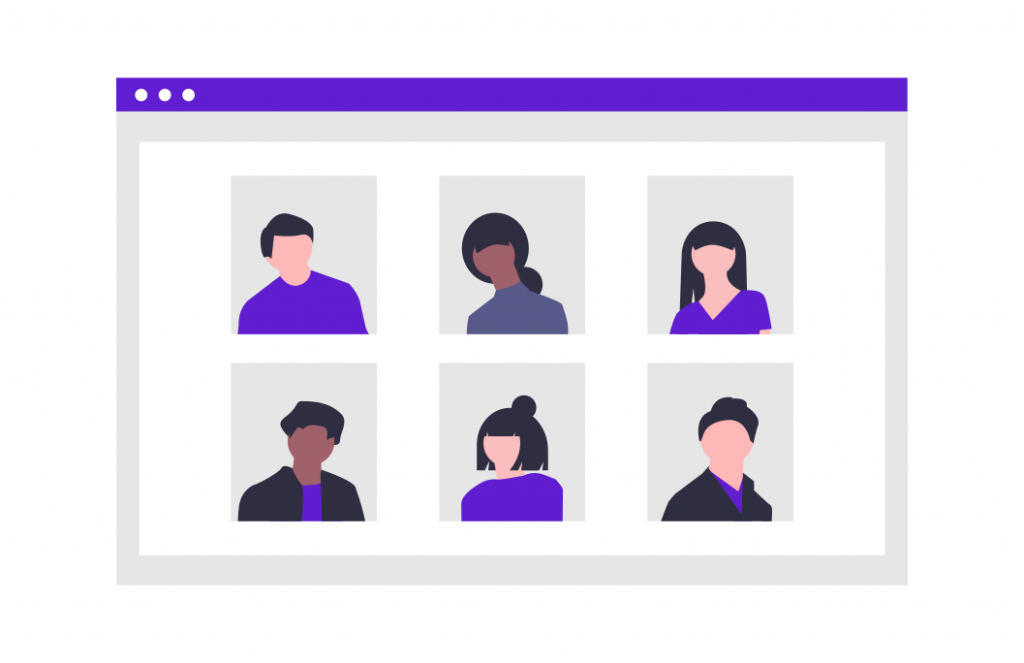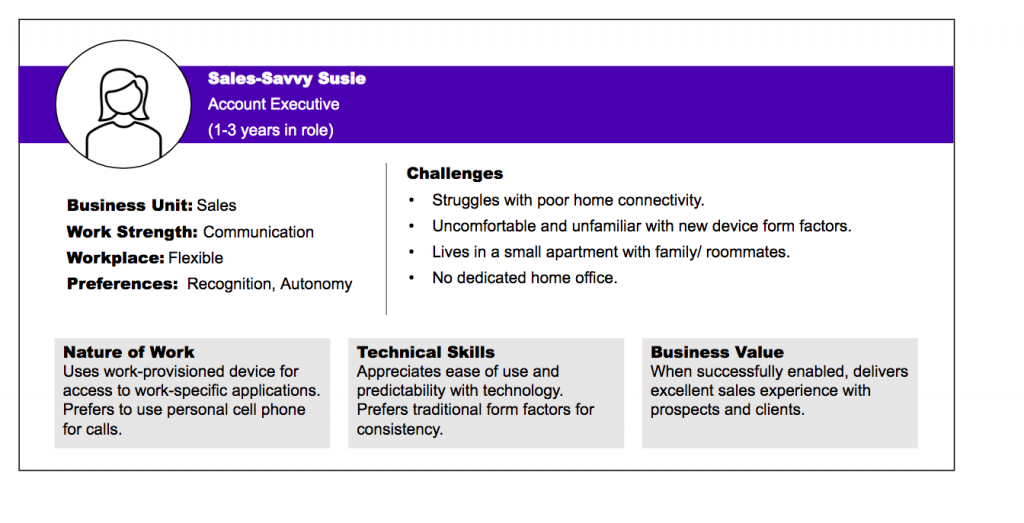
Do you use customer personas? Most companies would be familiar with the concept, so it’s not too much of a stretch to flip that on its head to get employee personas.
By 2025, more than a third of organisations with a customer experience initiative will see synchronisation with their employee experience initiative as vital to sustainable success and reduced customer and employee turnover.
Just like customer personas are important to elevate the customer experience, employee personas can be used to tailor your employee experience, improving workplace culture and performance.
What are employee personas and why you should be using them
Personas are all about understanding different groups of people by highlighting a quasi-fictional individual’s priorities and experiences. By projecting these traits onto your target market, you can craft an employee experience that directly addresses people’s wants and needs.
It’s just like putting yourself in another person’s shoes. The data you have on your employees will be your starting point and will help shape your employee profiles. By grouping common values, characteristics, wants and needs, you can start to see a better picture of what your workforce looks like.
Global technological research and consulting firm Gartner describes employee personas as employee profiles created to aggregate and summarise information based on the behaviour and preferences of real-life employees
Employees are more outspoken than ever in what they expect from their company, whether it’s hybrid working or professional development opportunities. Just like with customers, your employees will have different priorities that will dictate their needs.
Benefits of creating employee personas
- Personalised employee journey: Depending on the size of your organisation, you will be able to create experiences for groups of employees that resonate with them, making personalisation more efficient and cost-effective than a one-size-fits-all approach.
- Communication: According to Gartner, effective internal communication is the main goal for separating employees into groups. Employee personas will help you speak in a way that will appeal to each group and engage employees by making a program relevant.
- Inclusive employee experience: Every employee feels represented in your organisation and they can see that their needs are acknowledged and heard.
- Learning and development: Your organisation is always changing and adapting. Employee personas will be key to planning a tailored training strategy to helping employees up-skill and prepare for the next technological advancement.
What does an employee persona look like?

There are a few ways of putting together an employee persona but all of them typically outline a list of similar characteristics, skills and pain points.
Let’s start with a name: Sales-Savvy Susie. She is the account executive of her company, has been in her role for about three years and works from home. There’s often also a short accompanying quote or bio that gives us an idea about our persona’s character. For example, “As the face of my company, technology helps me seamlessly and virtually connect to prospects and customers.”
Already we have an idea that Susie is skilled in communicating with people using technology.
Next, we can consider what motivations and challenges Susie faces while at work. This part of the persona will help highlight areas that you as an employer can help with. Some examples of what motivates Susie might be recognition and autonomy, while challenges may include working in a small apartment with roommates and no dedicated office space.
As our understanding of Susie grows, we can respond better to her personal needs by promoting personal working places and a stipend to work in co-working space if she prefers remote work.
Finally, we can list Susie’s skills and experience: Susie has over 5 years of sales experience and appreciates ease of use and predictability of technology and uses her personal phone for work calls. She manages a team of 3 salespeople with different levels of experience.
We might conclude from this that Susie may find it beneficial to participate in a training session on how to give feedback for the next time performance reviews come around.
With the help of employee personas like this one, you can predict what your employees may need in the future and what they will find beneficial, so that they have the information and resources to complete their work at a high level.
5 Steps to creating your own employee personas
Step 1: Do your research
All the information you need may not be at your fingertips, but with the right method of extraction, you can find everything you need.
Surveys, interviews, listening tools and focus groups are all good methods to build data on the work environment and how people are working together.
As you gather more information, common traits and behaviours will start appearing and you’ll start to see clear groups of people form. While consolidating your employees’ information you will also benefit from outlining potential areas of improvement for your organisation as a whole.
Step 2: Identify your employee personas
Developing a set of criteria for your personas can help differentiate them and organise the data you’ve collected from your research. You may wish to take special note of quantitative data like age and years spent in a particular role, as well as qualitative data like career goals and workplace challenges.
Using this knowledge can help you build an employee journey, very similar to a customer journey. Ask yourself questions like:
- “What was their first contact with this organisation?”
- “How was the onboarding process?”
- “What sort of professional development has been completed?”
Answering these questions will help your personas take shape and feel like they could actually be an employee at your company.
Step 3: Narrow in on the strongest candidates
You’ll likely come up with many different types of employee personas, but you should try and aim for four or five. Any personas that seem similar enough can be merged together.
Give your final candidates names, photos and other relevant quantitative data and then based on your previous research describe their:
- Career goals and history
- Skills and experience
- Tools used
- Workplace environment
- Challenges
Step 4: Check in with your employees
Make sure to consult with your employees to see if you are on the right track or way off the mark. They’re the ones you are trying to represent with these personas, so it’s important to listen and incorporate any of their feedback.
You can complete this process in a group workshop or a one-on-one interview with a representative of each group. It will also encourage future involvement and use of the personas within the workplace if employees feel they have been part of the process.
Step 5: Use your personas
Set up your shiny new personas where they are visible, and it is clear when and how to use them. They’ll do you no good tucked away in a folder.
When you have a workplace initiative to introduce or have a specific project to complete, use your personas to anticipate possible challenges. They will also help connect leadership with the needs of employees, so that everyone is on the same page.
